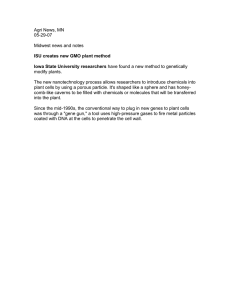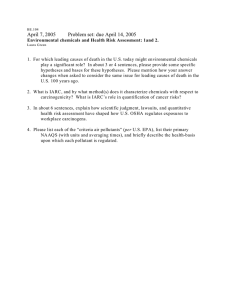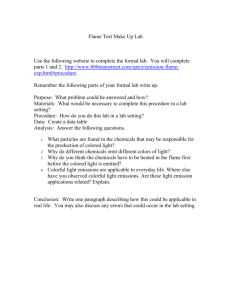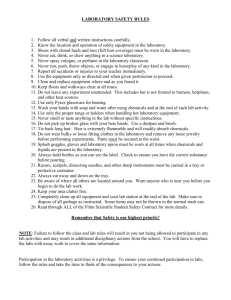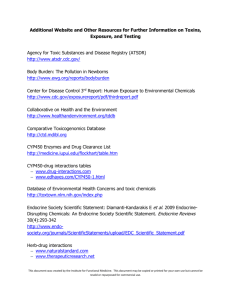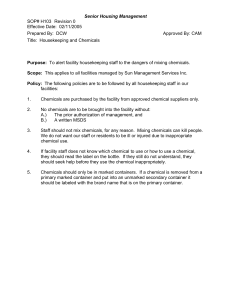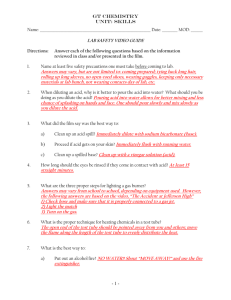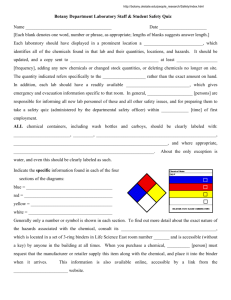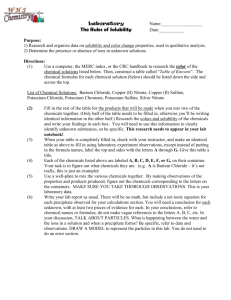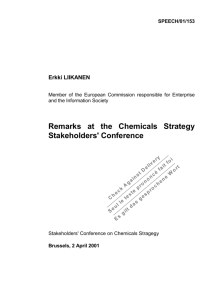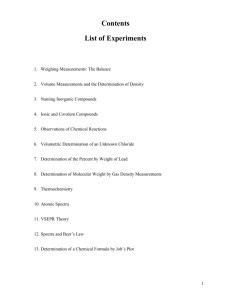"What do you know?" Quiz
advertisement
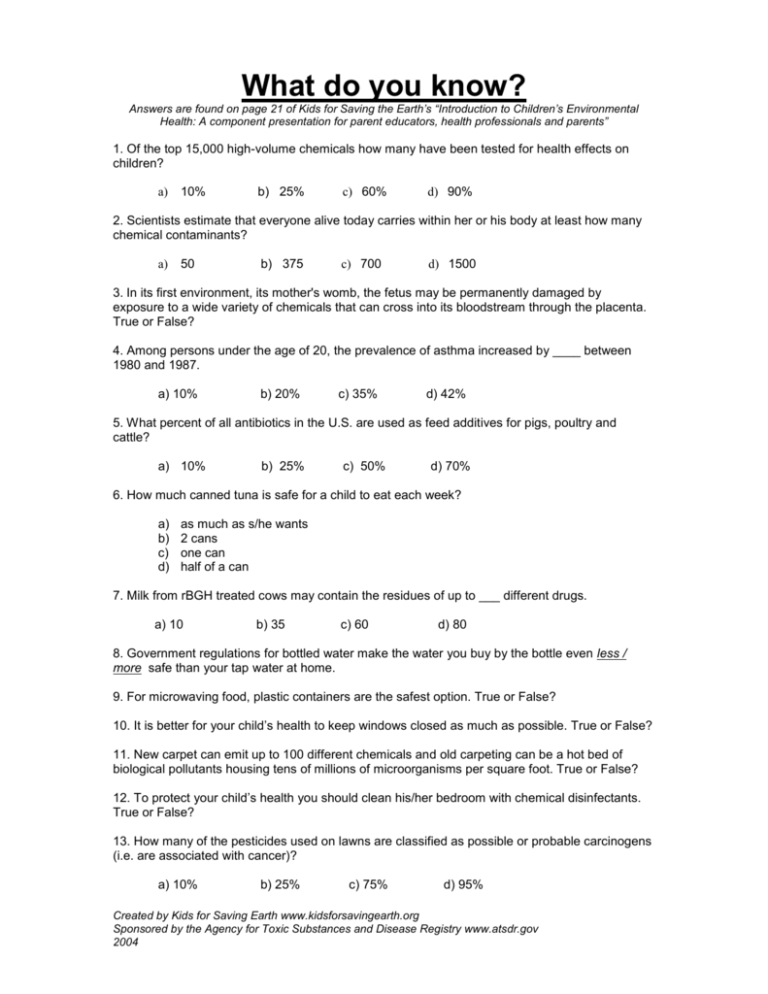
What do you know? Answers are found on page 21 of Kids for Saving the Earth’s “Introduction to Children’s Environmental Health: A component presentation for parent educators, health professionals and parents” 1. Of the top 15,000 high-volume chemicals how many have been tested for health effects on children? a) 10% b) 25% c) 60% d) 90% 2. Scientists estimate that everyone alive today carries within her or his body at least how many chemical contaminants? a) 50 b) 375 c) 700 d) 1500 3. In its first environment, its mother's womb, the fetus may be permanently damaged by exposure to a wide variety of chemicals that can cross into its bloodstream through the placenta. True or False? 4. Among persons under the age of 20, the prevalence of asthma increased by ____ between 1980 and 1987. a) 10% b) 20% c) 35% d) 42% 5. What percent of all antibiotics in the U.S. are used as feed additives for pigs, poultry and cattle? a) 10% b) 25% c) 50% d) 70% 6. How much canned tuna is safe for a child to eat each week? a) b) c) d) as much as s/he wants 2 cans one can half of a can 7. Milk from rBGH treated cows may contain the residues of up to ___ different drugs. a) 10 b) 35 c) 60 d) 80 8. Government regulations for bottled water make the water you buy by the bottle even less / more safe than your tap water at home. 9. For microwaving food, plastic containers are the safest option. True or False? 10. It is better for your child’s health to keep windows closed as much as possible. True or False? 11. New carpet can emit up to 100 different chemicals and old carpeting can be a hot bed of biological pollutants housing tens of millions of microorganisms per square foot. True or False? 12. To protect your child’s health you should clean his/her bedroom with chemical disinfectants. True or False? 13. How many of the pesticides used on lawns are classified as possible or probable carcinogens (i.e. are associated with cancer)? a) 10% b) 25% c) 75% d) 95% Created by Kids for Saving Earth www.kidsforsavingearth.org Sponsored by the Agency for Toxic Substances and Disease Registry www.atsdr.gov 2004




